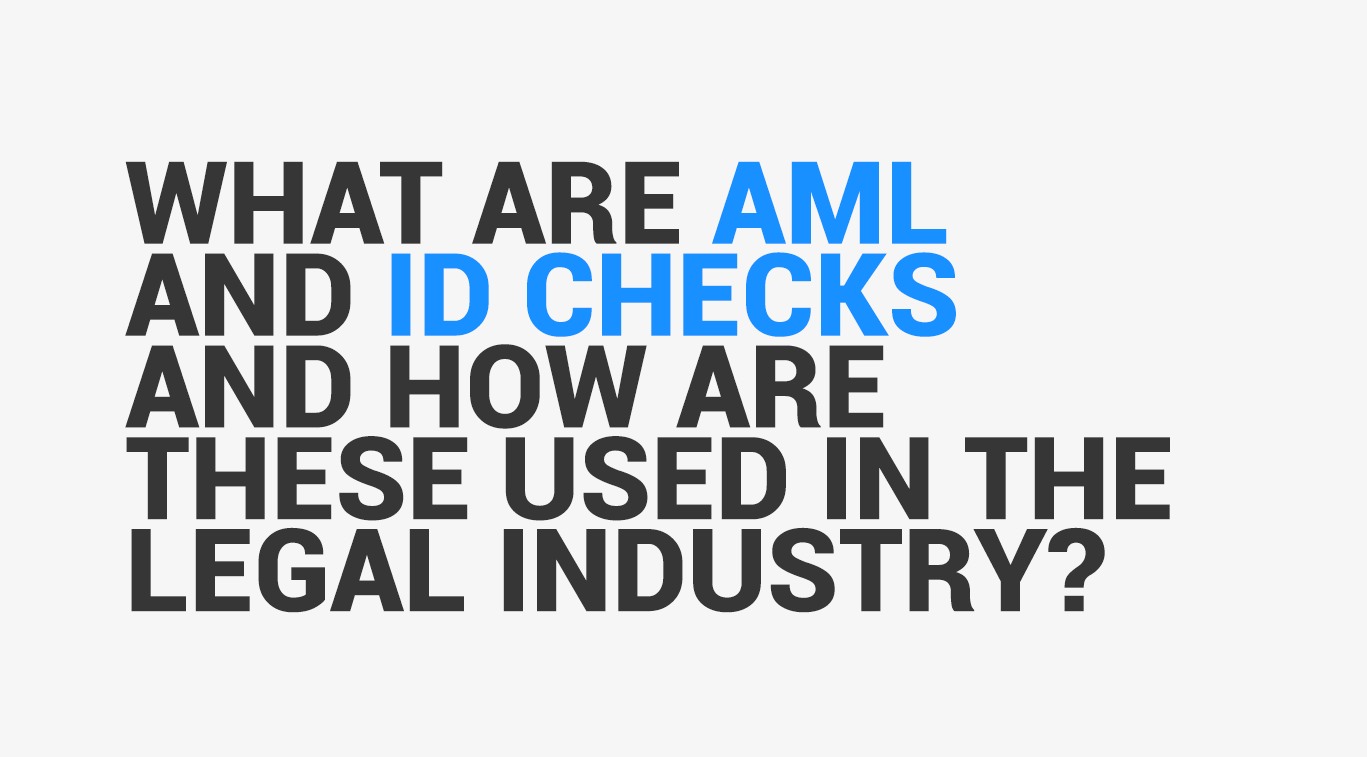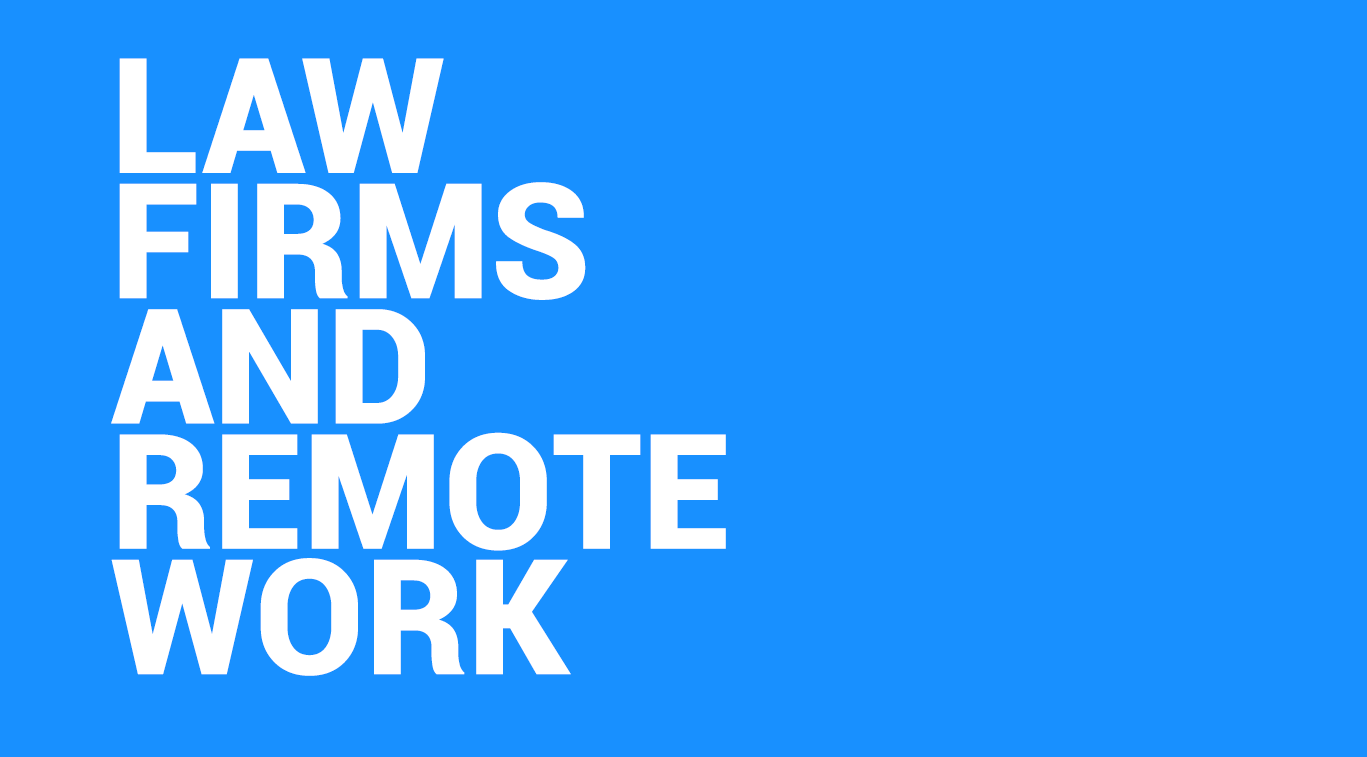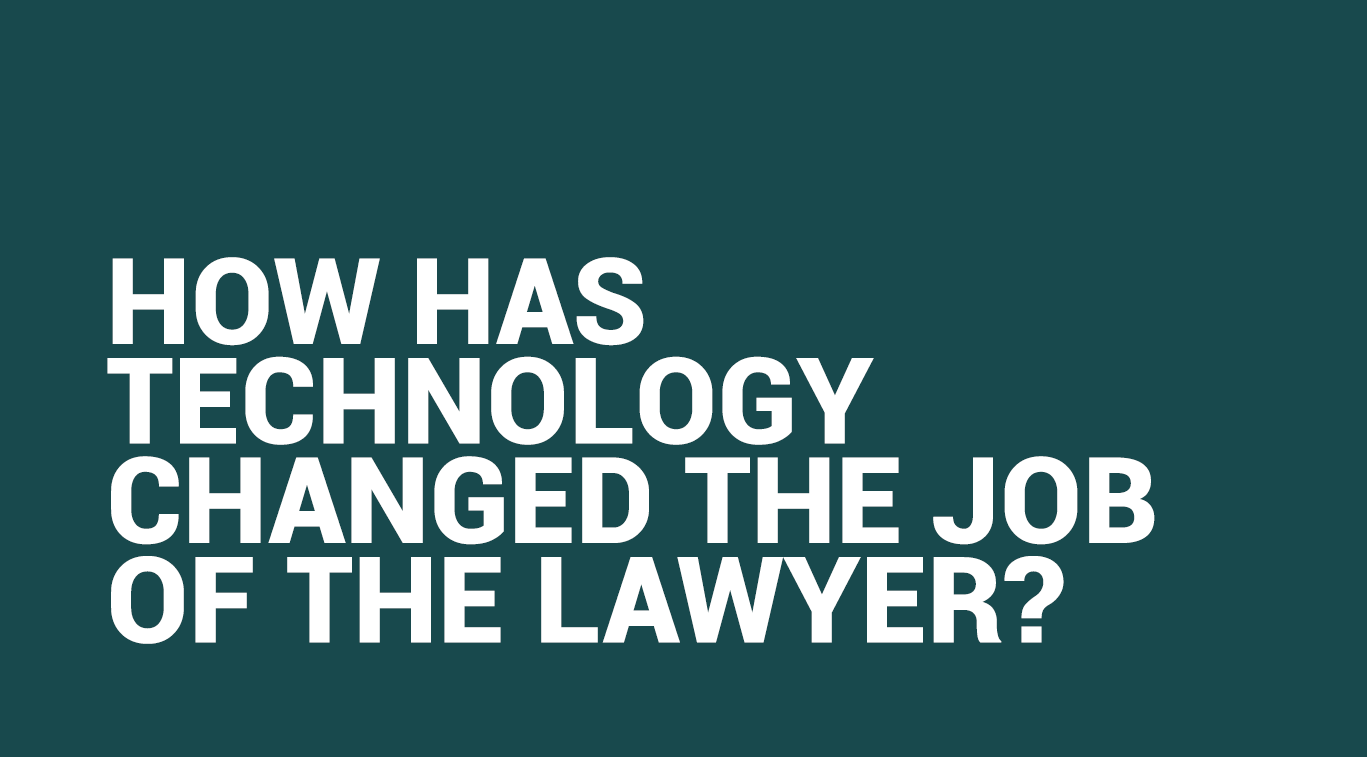What are AML and ID checks and how are these used in the Legal Industry?

Written by Shrisha Sapkota
Blogger

What is Anti-Money Laundering (AML)?
It is necessary to learn what money laundering is before understanding AML regulations.[1] Money Laundering is legal terminology for a type of financial crime which involves taking criminally obtained proceeds (dirty money) and disguising their origins so they’ll appear to be from a legitimate source.[2] Money laundering seeks to conceal crimes ranging from small-time tax evasion and drug trafficking to public corruption and the financing of groups designated as terrorist organizations.[3] Over the past several decades, money laundering has become an increasingly prevalent issue – both financial institutions and governments are constantly looking for new ways to fight money launderers, and several anti-money laundering policies have been put in place to help this effort.[4] According to the International Monetary Fund (IMF), laundered money makes up 2% to 5% of the world’s GDP.[5]
Anti-money laundering (AML) refers to the web of laws, regulations, and procedures aimed at uncovering efforts to disguise illicit funds as legitimate income.[6] It refers to the activities financial institutions perform to achieve compliance with legal requirements to actively monitor for and report suspicious activities.[7] Global and local regulators are established worldwide to prevent financial crimes, and these regulators build AML policies that companies must comply with and as this process can be complex, financial organisations have AML Compliance departments.[8] AML laws require that financial institutions report any financial crime they detect to relevant regulators.[9]
Anti-money laundering is closely related to counter-financing of terrorism (CFT), which financial institutions use to combat terrorist financing and AML regulations combine money laundering (source of funds) with terrorism financing (destination of funds).[10] The objective of anti-money laundering (AML) is to deter criminals from feeding their illicit funds into the financial system as criminals use money laundering to hide the true source of their money that has been derived from crimes.[11] The primary purpose of AML regulations is to prevent money laundering and regulators publish a series of procedures to achieve this goal.[12] One such procedure is Know Your Customer (KYC).
For banks, compliance starts with verifying the identity of new clients, a process sometimes called Know Your Customer (KYC).[13] KYC involves several steps to establish customer identity; understand the nature of customers’ activities and qualify that the source of funds is legitimate and assess money laundering risks associated with customers.[14] Money laundering is a process which typically follows three stages to finally release laundered funds into the legal financial system.[15] Placement puts the “dirty cash” into the legitimate financial system while hiding its source; layering or “structuring” hides the source of the money through a series of transactions and accounting tricks which involves breaking the funds into small transactions and makes it difficult to detect the laundering activity; and in the final step, integration, the now-laundered money is withdrawn from the legitimate account and real records to be used for whatever reasons the criminals have as a top priority for it.[16] The KYC process aims to stop such schemes at the first deposit window.[17]
The Financial Action Task Force (FATF) is responsible for the creation of most anti-money laundering standards, it made a framework for countries to follow and after putting this framework into effect, the FATF then began to systematically identify countries that did not have proper legislation regarding money laundering.[18] This tactic of singling out countries without the proper legislation against money laundering encouraged them to modify their legislation and actively start enforcing these policies and currently, 37 countries are a part of FATF. Apart from KYC measures, organisations can apply Customer Due Diligence (CDD) procedures to understand their customers’ risks and know their customers better as the CDD procedures can detect risks new customers might bring and take necessary measures.[19]
Anti Money laundering laws or AML legislation is becoming increasingly strict for financial service providers as they must be prevented from financial crimes, financial action and/or terrorism.[20] By reporting suspicious activities to the government via suspicious transaction reports (STRs) and suspicious activity reports (SARs), banks alert law enforcement to possible criminal activities and many regulatory bodies have enacted critical AML legislation with compliance requirements banks follow to enforce anti-money laundering laws – like US Patriot Act, Bank Secrecy Act, EU Fourth Anti-Money Laundering Directive (4AMLD), Proceeds of Crime (Money Laundering) and Terrorist Financing Act (PCMLTFA) in Canada, and the Australian Anti-Money Laundering and Counter-Terrorism Financing Act of 2006 among others.[21]
What is an ID Check?
Digital identity verification brings the identity verification concept to today’s remote world and with data breaches, account takeover attacks, and identity theft on the rise and increased demand for remote processes due to the COVID-19 pandemic, businesses need to detect identity fraud and determine if someone is who they claim to be online.[22] ID verification or ID check is an authentication process that compares the identity a person claims to possess with data that proves it and many documents can serve as providers of this objective truth: birth certificates, social security cards, driver’s licence, and others.[23] The ability to accurately recognize, identify, and verify a person is fundamental to establishing trust between financial service providers and their clients.[24]
Identity verification is the important process of ensuring that a person is who they claim to be when opening a bank account, applying for a loan, or other financial processes. Though identity verification is an important security measure in combating new account fraud, Identity verification also plays a role in Know Your Customer (KYC) and anti-money laundering (AML) efforts at financial institutions which assess and monitor customer risk.[25] Combining a brief results summary with a detailed granular report, ID Check delivers identity verification tools which are both user-friendly and highly informative as well as a corresponding score.[26]
Commonly for ID check, each candidate will provide a different set of identification documents – examples of commonly provided documents are birth certificates, passports, driver’s licence, medicare cards and bank/credit cards – and they are provided with detailed guidance as to what combinations of ID documents and additional details need to be provided and this documentation can be uploaded entirely online.[27] There are several methods and systems of carrying out offline and online identity verification services which means the identity verification process can be carried out in different ways depending on the channel and the way the method is used.[28] However, it is important to understand that not all online identity verification services and solutions comply with the standards and qualifications needed by law for most procedures (especially financial sector operations) to guarantee their legitimacy, safety, and trust – one such method is to verify people’s identity remotely is the use of images and selfies and it is only used to identify individuals for low-risk operations, as it is unreliable and uncertain.[29]
ID verification is a pivotal aspect of keeping banks and other organisations free from fraud and bad actors as it enables the identification and early prevention of nefarious individuals from using the institution to launder money or conceal the true nature of their activities.[30] Digital identity providers tailor comprehensive solutions – like electronic customer IDs, advanced authentication and verification methods, electronic signing, and more – for customers to enjoy significant functional benefits in the areas of security, control, and flexibility.[31] ID verification plays a role in broader Anti-Money Laundering initiatives, acting as a gatekeeper to ensure that only legitimate individuals and businesses can use the bank.[32]
How are AML and ID Checks Used in the Legal Industry?
A recent report stated that 80% of law firms find process-oriented AML and KYC screening challenging.[33] Law firm workflow solutions are subject to legislation that requires them to put in robust processes and controls to prevent the firm from being used to facilitate money laundering.[34] This is why firms need legal software tools that will do this for them.
Dedicating staff to performing costly, manual compliance processes isn’t the best use of resources and allocating 90% of an employee’s time to data collection, entry and organisation — when it’s better to use legal workflow automation software — is inefficient and negatively impacts the bottom line.[35] Anti-Money Laundering (AML) and ID check compliance is a necessary tools for law, but it needn’t monopolise the law practitioner’s time and law firms don’t have to compromise between Client Due Diligence (CDD) controls and growing their business because, with access to the right legal technology solutions and risk data, firms can onboard new clients with a streamlined, compliant, and cost-effective AML and ID check process.[36]
When firms establish a new relationship with a client and before any exchange of money, they must perform the appropriate client due diligence to ensure AML compliance.[37] By guiding users through the anti-money laundering process, practice management software for law firms can log documents and checks, generate and record correspondence and set flags, warnings and reminders to ensure they are compliant with current AML regulations.[38] Effective legal software like this was previously only owned and used by larger firms as they were too expensive to access. But through Good Law Software’s integrated software for law with the Thirdfort partnership, all GLS clients get full access to AML and ID check functionality.
AML/KYC requirements and ID checks are continually growing the demands on compliance and automating these ensures that compliance can perform its due diligence, fraud prevention measures remain strong, and, at the same time, increase capacity, productivity and operational efficiencies.[39] While there are a number of high-quality free sources of information, such as search engines or public databases, finding exactly what you need from this vast range of resources is incredibly time-consuming – this simply isn’t a feasible long-term approach for any business that values speed, efficiency and scalability.[40] This is where you need to select legal services from Thirdfort and GLS’ integrated applications.
All businesses that are regulated by the money laundering regulations need to perform AML and ID checks as part of the customer due diligence that’s necessary to help identify and protect against the risk of money laundering – transaction monitoring, transaction screening and client screening are all important tools in the toolkit for establishing the necessary internal controls and monitoring systems to are required to guide and inform the level and intensity of AML and ID checks.[41] The GLS and Thirdfort integration allows authorised users at law firms to conduct anti-money laundering (AML), Know Your Client (KYC) and Source-of-Funds (SoF) checks all within the GLS platform. Thirdfort’s proprietary risk engine identifies fraud and money laundering risks faster, smoother, and more accurately than manual verification. The risk engine is powered by best-in-class KYC and AML services alongside Open Banking and transaction-specific data.
References
[1] https://sanctionscanner.com/knowledge-base/anti-money-laundering-aml-49
[2] https://www.sas.com/en_us/insights/fraud/anti-money-laundering.html
[3] https://www.fincen.gov/what-money-laundering
[4] https://complyadvantage.com/insights/anti-money-laundering/
[5] https://sanctionscanner.com/knowledge-base/anti-money-laundering-aml-49
[6] https://www.investopedia.com/terms/a/aml.asp#citation-11
[7] https://www.sas.com/en_us/insights/fraud/anti-money-laundering.html
[8] https://sanctionscanner.com/knowledge-base/anti-money-laundering-aml-49
[9] https://complyadvantage.com/insights/anti-money-laundering/
[10] https://www.sas.com/en_us/insights/fraud/anti-money-laundering.html
[11] https://complyadvantage.com/insights/anti-money-laundering/
[12] https://sanctionscanner.com/knowledge-base/anti-money-laundering-aml-49
[13] https://www.investopedia.com/terms/a/aml.asp#citation-11
[14]https://www.swift.com/your-needs/financial-crime-cyber-security/know-your-customer-kyc/meaning-kyc
[15] https://www.unodc.org/unodc/en/money-laundering/overview.html
[16] https://internationalsales.lexisnexis.com/glossary/compliance/anti-money-laundering-aml
[17] https://www.investopedia.com/terms/a/aml.asp#citation-11
[18] https://complyadvantage.com/insights/anti-money-laundering/
[19] https://sanctionscanner.com/knowledge-base/anti-money-laundering-aml-49
[20] https://internationalsales.lexisnexis.com/glossary/compliance/anti-money-laundering-aml
[21] https://www.sas.com/en_us/insights/fraud/anti-money-laundering.html
[22] https://www.onespan.com/topics/identity-verification
[23] https://www.lightico.com/blog/what-is-id-verification/
[24] https://vilmate.com/blog/digital-id-and-identity-verification/
[25] https://www.onespan.com/topics/identity-verification
[26] https://www.crifdecisionsolutions.co.uk/products-and-services/id-check/
[27]https://www.peoplecheck.com.au/id-check/#:~:text=The%20ID%20Check%20involves%20the,date%20of%20birth%20and%20photograph.
[28] https://www.electronicid.eu/en/blog/post/identity-verification/en
[29] https://www.electronicid.eu/en/blog/post/identity-verification/en
[30] https://www.lightico.com/blog/what-is-id-verification/
[31] https://vilmate.com/blog/digital-id-and-identity-verification/
[32] https://www.lightico.com/blog/what-is-id-verification/
[33] https://www.denovobi.com/articles/why-your-law-firm-needs-a-system-to-do-aml-and-kyc-checks/
[34] https://www.selectlegal.co.uk/anti-money-laundering-software-for-law-firms/
[35] https://www.trulioo.com/blog/aml-compliance#technology
[36] https://solutions.risk.lexisnexis.co.uk/BSUKIFC21-FCC-legal-LPLN-537501-v2
[37] https://www.denovobi.com/articles/why-your-law-firm-needs-a-system-to-do-aml-and-kyc-checks/
[38] https://www.selectlegal.co.uk/anti-money-laundering-software-for-law-firms/
[39] https://www.trulioo.com/blog/aml-compliance#technology
[40] https://www.denovobi.com/articles/why-your-law-firm-needs-a-system-to-do-aml-and-kyc-checks/
[41] https://www.napier.ai/knowledgehub/what-is-an-anti-money-laundering-check#P7








